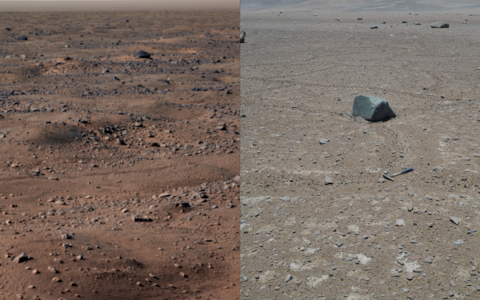Life on Mars is possible after scientists find bacteria flourishing in driest place on Earth

Life on Mars is possible, scientists have claimed, after discovering bacteria living in the driest place on Earth.
Previously experts believed that nothing could thrive in the Atacama Desert, in Chile, which goes for decades without rain, and is the most similar place on Earth to the Martian surface.
Although microbes had been found in the soils of the Atacama it was thought they had been blown there from elsewhere.
But now, scientists at Washington State University, have discovered that microorganisms can survive the arid conditions, staying dormant for hundreds or even thousands of years if necessary, and then reactivating when it rains.
Planetary scientist Dr Dirk Schulze-Makuch said: “It has always fascinated me to go to the places where people don't think anything could possibly survive and discover that life has somehow found a way to make it work.
“Jurassic Park references aside, our research tell us that if life can persist in Earth's driest environment there is a good chance it could be hanging in there on Mars in a similar fashion.
"We know there is water frozen in the Martian soil and recent research strongly suggests nightly snowfalls and other increased moisture events near the surface. If life ever evolved on Mars, our research suggests it could have found a subsurface niche beneath today's severely hyper-arid surface."

The discovery was made after Dr Schulze-Makuch and his team went to the Atacama for the first time in 2015 and, by chance, encountered wet weather.
After the extremely rare shower, the researchers detected an explosion of biological activity in the Atacama soil.
Using sterilised spoons to scoop soil samples from various depths and then performed genomic analyses to identify the different microbial communities that were reproducing in the samples.
The researchers found several indigenous species of microbial life that had adapted to live in the harsh environment.

When the researchers returned to the Atacama in 2016 and 2017 they found that the same microbial communities in the soil were gradually reverting to a dormant state as the moisture went away.
"In the past researchers have found dying organisms near the surface and remnants of DNA but this is really the first time that anyone has been able to identify a persistent form of life living in the soil of the Atacama Desert," Schulze-Makuch said.
"We believe these microbial communities can lay dormant for hundreds or even thousands of years in conditions very similar to what you would find on a planet like Mars and then come back to life when it rains."
The research was published in Proceedings of the National Academy of Sciences.


